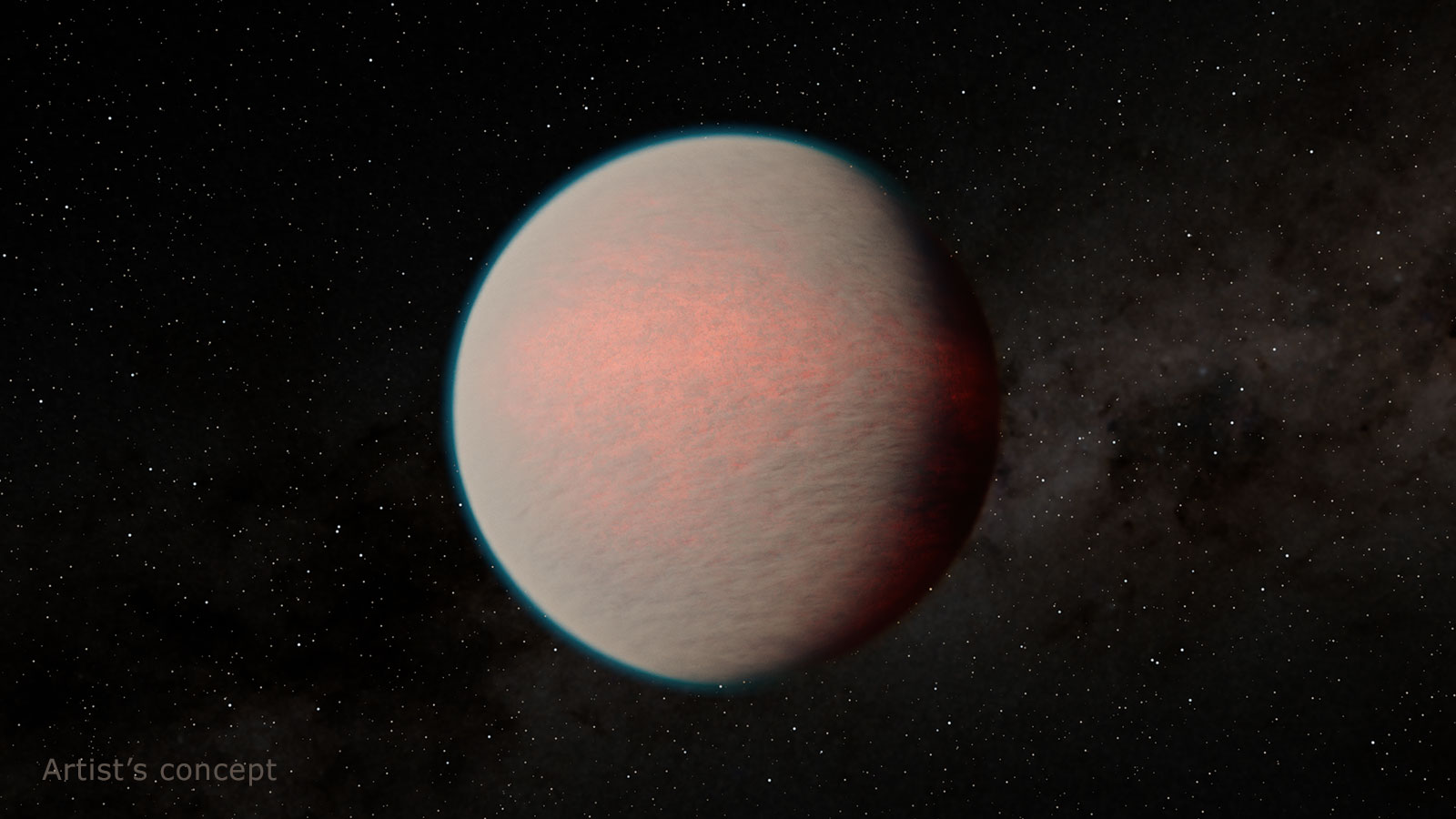[/caption]
Would Kevin Costner’s character in the movie “Waterworld” be at home on this exoplanet? The planet GJ 1214b was discovered in 2009 and was one of the first planets where an atmosphere was detected. In 2010, scientists were able to measure the atmosphere, finding it likely was composed mainly of water. Now, with infrared spectra taken during transit observations by the Hubble Space Telescope, scientists say this world is even more unique, and that it represents a new class of planet: a waterworld underneath a thick, steamy atmosphere.
“GJ 1214b is like no planet we know of,” said Zachary Berta of the Harvard-Smithsonian Center for Astrophysics (CfA). “A huge fraction of its mass is made up of water.”
GJ 1214b is a super-Earth — smaller than Uranus but larger than Earth — and is about 2.7 times Earth’s diameter. That gives it a volume 20 times as great as Earth yet it has less than seven times as much mass, so it’s actually kind of a lightweight. This world is also hot: it orbits a red-dwarf star every 38 hours at a distance of 2 million kilometers, giving it an estimated temperature of 230 degrees Celsius.
Berta and a team of international astronomers used Hubble’s Wide Field Camera 3 (WFC3) to study GJ 1214b when it crossed in front of its host star. During such a transit, the star’s light is filtered through the planet’s atmosphere, giving clues to the mix of gases.
“We’re using Hubble to measure the infrared color of sunset on this world,” Berta said.
Hazes are more transparent to infrared light than to visible light, so the Hubble observations help to tell the difference between a steamy and a hazy atmosphere. They found the spectrum of GJ 1214b to be featureless over a wide range of wavelengths, or colors. The atmospheric model most consistent with the Hubble data is a dense atmosphere of water vapor.
Since the planet’s mass and size are known, astronomers can calculate the density, of only about 2 grams per cubic centimetre. Water has a density of 1 gram per cubic centimetre, while Earth’s average density is 5.5 grams per cubic centimetre. This suggests that GJ 1214b has much more water than Earth does, and much less rock.
As a result, the internal structure of GJ 1214b would be extraordinarily different from that of our world.
“The high temperatures and high pressures would form exotic materials like ‘hot ice’ or ‘superfluid water’, substances that are completely alien to our everyday experience,” Berta said.
Theorists expect that GJ 1214b formed further out from its star, where water ice was plentiful; later the planet migrated inward towards the star. In the process, it would have passed through the star’s habitable zone, where surface temperatures would be similar to Earth’s. How long it lingered there is unknown.
GJ 1214b is located in the constellation of Ophiuchus (The Serpent Bearer), and just 40 light-years from Earth. Scientists say it will be a prime candidate for study by the NASA/ESA/CSA James Webb Space Telescope, planned for launch later this decade.
This article was updated on Feb. 23
Read the team’s paper (pdf).
Source: ESA Hubble


